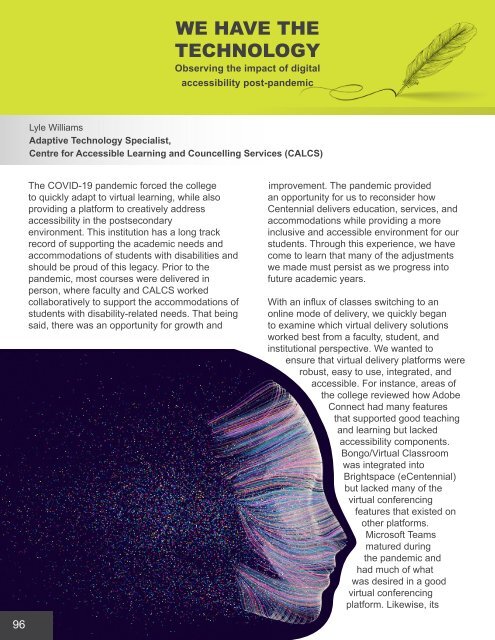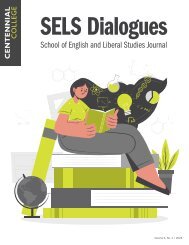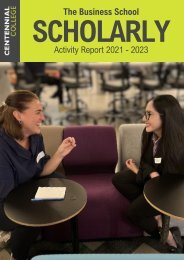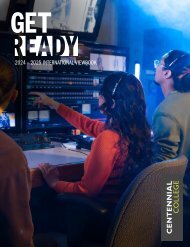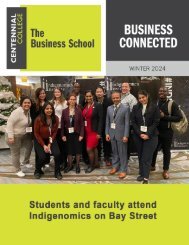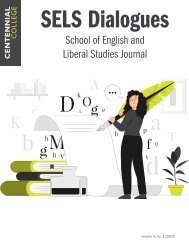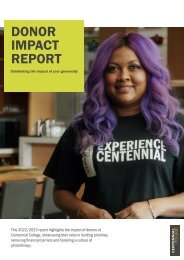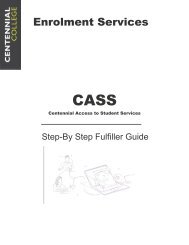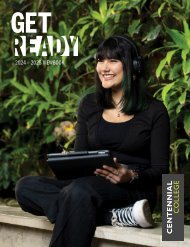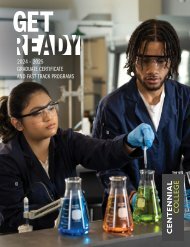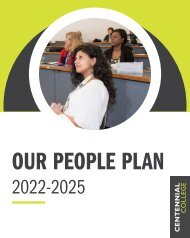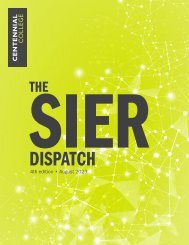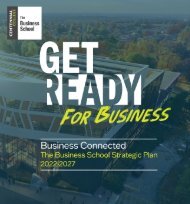The Teaching and Learning Innovation Digest - May 2023
Welcome to a truly special edition of the Teaching and Learning Innovation Digest! Our seventh annual academic publication has assumed an incredibly meaningful shape and form for a number of reasons. Not only did we receive an enthusiastic response with over 30 submissions via our institutional broadcast, but we also have consciously and intentionally embraced the principles of Universal Design for Learning by attempting to represent and celebrate the varied forms of expressions therein. From reflective essays, poetry, visual and performing arts, podcasts, video conversations to scholarly work, academic and applied research, news and updates, and interviews, this is truly a power-packed publication!
Welcome to a truly special edition of the Teaching and Learning Innovation Digest! Our seventh annual academic publication has assumed an incredibly meaningful shape and form for a number of reasons. Not only did we receive an enthusiastic response with over 30 submissions via our institutional broadcast, but we also have consciously and intentionally embraced the principles of Universal Design for Learning by attempting to represent and celebrate the varied forms of expressions therein. From reflective essays, poetry, visual and performing arts, podcasts, video conversations to scholarly work, academic and applied research, news and updates, and interviews, this is truly a power-packed publication!
You also want an ePaper? Increase the reach of your titles
YUMPU automatically turns print PDFs into web optimized ePapers that Google loves.
96<br />
<strong>The</strong> COVID-19 p<strong>and</strong>emic forced the college<br />
to quickly adapt to virtual learning, while also<br />
providing a platform to creatively address<br />
accessibility in the postsecondary<br />
environment. This institution has a long track<br />
record of supporting the academic needs <strong>and</strong><br />
accommodations of students with disabilities <strong>and</strong><br />
should be proud of this legacy. Prior to the<br />
p<strong>and</strong>emic, most courses were delivered in<br />
person, where faculty <strong>and</strong> CALCS worked<br />
collaboratively to support the accommodations of<br />
students with disability-related needs. That being<br />
said, there was an opportunity for growth <strong>and</strong><br />
WE HAVE THE<br />
TECHNOLOGY<br />
Observing the impact of digital<br />
accessibility post-p<strong>and</strong>emic<br />
Lyle Williams<br />
Adaptive Technology Specialist,<br />
Centre for Accessible <strong>Learning</strong> <strong>and</strong> Councelling Services (CALCS)<br />
improvement. <strong>The</strong> p<strong>and</strong>emic provided<br />
an opportunity for us to reconsider how<br />
Centennial delivers education, services, <strong>and</strong><br />
accommodations while providing a more<br />
inclusive <strong>and</strong> accessible environment for our<br />
students. Through this experience, we have<br />
come to learn that many of the adjustments<br />
we made must persist as we progress into<br />
future academic years.<br />
With an influx of classes switching to an<br />
online mode of delivery, we quickly began<br />
to examine which virtual delivery solutions<br />
worked best from a faculty, student, <strong>and</strong><br />
institutional perspective. We wanted to<br />
ensure that virtual delivery platforms were<br />
robust, easy to use, integrated, <strong>and</strong><br />
accessible. For instance, areas of<br />
the college reviewed how Adobe<br />
Connect had many features<br />
that supported good teaching<br />
<strong>and</strong> learning but lacked<br />
accessibility components.<br />
Bongo/Virtual Classroom<br />
was integrated into<br />
Brightspace (eCentennial)<br />
but lacked many of the<br />
virtual conferencing<br />
features that existed on<br />
other platforms.<br />
Microsoft Teams<br />
matured during<br />
the p<strong>and</strong>emic <strong>and</strong><br />
had much of what<br />
was desired in a good<br />
virtual conferencing<br />
platform. Likewise, its<br />
counterpart Zoom began to excel, continuing to<br />
add several features <strong>and</strong> gained the capacity to<br />
be integrated into Brightspace.<br />
Impact on students<br />
Students with <strong>and</strong> without disabilities found<br />
virtual/remote education to be more accessible<br />
with improved access to digital content,<br />
recorded lectures, recorded demonstrations,<br />
etc. Recorded lectures have provided many<br />
students with the ability to review course<br />
content at a different pace to support their<br />
study/learning style. Students have commented<br />
on how personal the instruction feels with them<br />
being able to see the faculty’s screen, face,<br />
<strong>and</strong> content more clearly. Students expressed<br />
a sense of anonymity <strong>and</strong> did not feel singled<br />
out as a student requiring accommodations.<br />
Captions transformed the learning experience<br />
for many students. Students who are deaf,<br />
deafened, or hard-of-hearing now have access<br />
to real-time captions <strong>and</strong> transcripts through<br />
the virtual conference platform. Captions also<br />
supported students who benefit from livecaptioning<br />
or transcripts for clarity <strong>and</strong><br />
underst<strong>and</strong>ing, such as English-language<br />
learners, students with attention/focus<br />
challenges, etc. Students with hearing devices,<br />
such as implants, or hearing aids<br />
were now able to directly connect<br />
their computers for improved sound<br />
quality. Most importantly, students<br />
were able to use their assistive<br />
technology for lectures, labs,<br />
<strong>and</strong> studying.<br />
Students identified other benefits<br />
of virtual delivery relating to<br />
the cost-effectiveness of not<br />
having to commute or pay for<br />
parking. Students with medical<br />
conditions or those who are<br />
immunocompromised,<br />
also benefited from virtual<br />
delivery by not having to expose<br />
themselves to the potential risk of<br />
in-person instruction.<br />
Virtual delivery was not a perfect<br />
solution as students cited drawbacks <strong>and</strong><br />
challenges, including not having access<br />
to reliable internet, a computer (device),<br />
to concentrate during lectures or while<br />
studying, or being challenged with general<br />
technical issues connecting to synchronous<br />
lectures. Additionally, students reported<br />
difficulties focusing for extended periods of<br />
time in front of a computer screen, feeling<br />
disconnected from the student experience,<br />
not having direct in-person access to their<br />
faculty or other students, challenges with<br />
self-discipline, managing time, clarification,<br />
<strong>and</strong> other commitments. Some students felt<br />
disconnected from the student experience<br />
since they were not on campus or able<br />
to socialize. Students also expressed an<br />
inconsistency with video-conferencing solutions<br />
<strong>and</strong> confusion or misunderst<strong>and</strong>ing of how to<br />
use these technologies. <strong>The</strong>se inconsistencies<br />
utilizing virtual proctoring solutions<br />
highlighted the inaccessibility of these<br />
platforms in their goal of supporting student<br />
accommodations. Students found they<br />
were not always able to use their assistive<br />
technology on some of these inaccessible<br />
conferencing platforms.<br />
97


